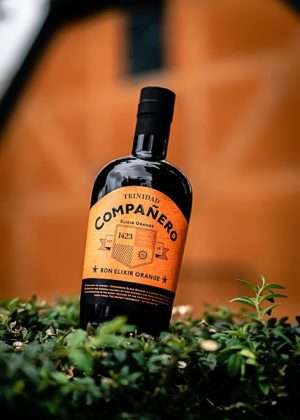Beitragsbild: copyright – Xavier Duprat/La Maison du Rhum – Paris https://lamaisondurhum-paris.com/
From slavery to bravery
Slavery hangs like a dark cloud over the history of rum and for many years both were inextricably linked. Rum was not just the drink of the slaves, it was also a currency used by the plantation owners to pay the pirates for the slaves who had to work on their sugarcane plantations. It is these sugar cane plantations that led to the creation of the world’s first rum production.
On the ships of Christopher Columbus were also sugar cane farmers from the Canary Islands, which established on the islands of Hispaniola, Puerto Rico, Jamaica and Cuba sugar cane plantations. They did business with the sale of the sugar on the backs of the slaves. What they should do with the remainder of the product, which was left behind after sugar production, they did not know. The sugarcane plantations spread in the surrounding area and thus also came to Brazil. Here, the Portuguese plantation owners managed to ferment the sugar cane juice into a rumähnlichen drink, which they gave to the slaves or sold to the pirates.
A few years later, the world’s first rum distillery opened in Barbados and suddenly rum was no longer just something given to slaves. It was a commodity that could be exported, including to England, where it was well received by the middle class. The early rum, which was described as “strong and burning and with an unpleasant smell”, was called in England “Kill-Devil”. However, the quality gradually got better, and the drink spread to the UK market. Within a hundred years, the rum import to England increased from 1000 liters of rum per year to 9 million liters. Added to this was an unknown amount of rum smuggled into the country by pirates. With this, the rum had made its way into the western world. However, the suddenly upgraded status changed little for the many slaves on the plantations. Their free labor continued to be part of rum production, well into the 19th century.
Slavery was abolished earlier in some places than in others. Denmark and Norway were among the first to officially abolish the trade of African slaves in their colonies in 1803. But the slaves remained slaves and their children were still born slaves. The British Isles abolished slavery in 1833, but slavery was abolished in 1848 by Governor-General Peter von Scholten in the Danish West Indies. He lived together with his free black wife Anna Heegaard on the islands, and he was, perhaps spurred on by his wife, a great defender of the abolition of slavery. In 1847, he finally succeeded in enforcing a continuous abolition of slavery. This meant that children born to slaves should subsequently be considered free. Slavery should be abolished over the next 12 years.
But that’s not how it happened …
Already the following year, a slave revolt broke out and the slaves, led by the slave John Gotlieb (called General Buddhoe), took control of the city Frederiksted on Sct. Croix. Peter von Scholten finally took matters into his own hands. He went to Frederiksted to negotiate with the slaves. Although he was not entitled to do so, he released the slaves and abolished slavery to the dismay of the plantation owners and the West Indian government. Afterwards, Peter von Scholten had to leave Danish West Indies under cover of the night.
Ron Esclavo “The Rum of Slaves” commemorates the slaves who had to pay the highest price for the rum to spread rapidly in its first year of production, and those who stood up and fought against slavery. We all bump into them today. Ron Esclavo from slavery to bravery!
Rumquality
Ron Esclavo 12
Ron Esclavo 12 is the first rum in the series Ron Esclavo. It is a blend of rums that are up to 12 years old. Both the taste and the scent are sweet and soft with vanilla, caramel and a bit of burnt oak. The finish is long and delicious.

Ron Esclavo 15
Ron Esclavo 15 is the second in the Esclavo series. It is a blend of rums that are up to 15 years old. It has a particularly soft and sweet taste and is perfect for beginners. It also has a sweet vanilla scent and a taste of caramel, honey, vanilla and cinnamon notes, as well as a slightly spicy finish.

Ron Esclavo XO
Ron Esclavo XO is the number three in the rum series Ron Esclavo. Its dark color reveals that it is a blend of rums that are up to 23 years old. Ron Esclavo XO has a round and spicy scent of vanilla, caramel and a little prunes, and a sweet taste of vanilla, honey, caramel and cinnamon. The finish is long and spicy and the extra percentage of alcohol adds power to the flavor, which unfolds the flavor nuances of Ron Esclavo XO in the most beautiful way.

Ron Esclavo XO Cask
Ron Esclavo XO Cask is ‘the grand finale’ in the series Ron Esclavo. It is the same rum as the Ron Esclavo XO, but the XO Cask was bottled at a cask strength of 65%. The scent is round and very spicy with vanilla, caramel and a little prunes and a warm and delicious taste of vanilla, sweet caramel and oak. The XO Cask is a very warm and strong rum with a finish that never seems to end.





